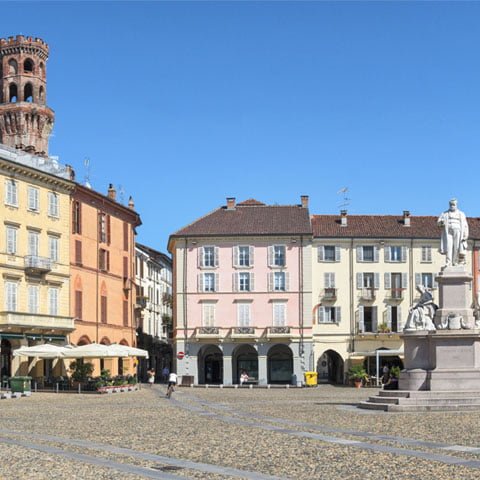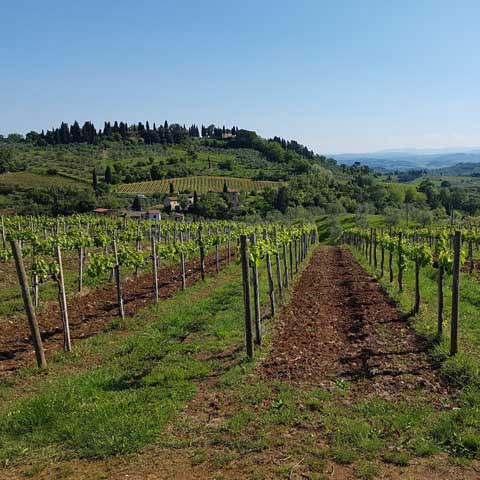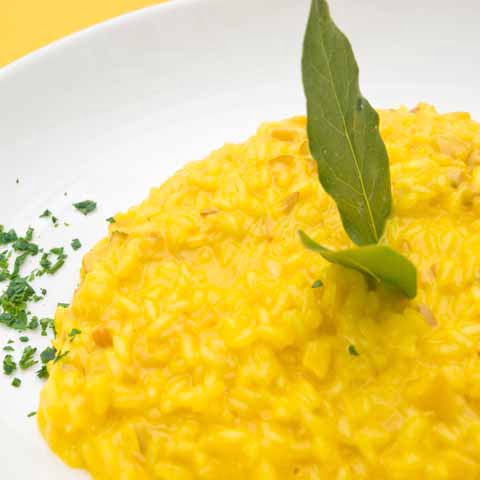The town of Vercelli has a long and storied history based in both agriculture and artistic achievement. Much of the city’s history sees it prized for its vineyards and rice paddies, especially during ancient and Roman times when it was a major agricultural exporter to the rest of the empire. During the days of the Roman Empire, the city was a trading crossroads through which many goods passed.
However, Vercelli would not always be so prosperous. In the late-fourth century, around the year 374, the city suffered a major economic collapse. Puzzlingly though, another scholar wrote about 20 years later that the city had recovered and was once more flourishing. Indeed, the general status of Vercelli throughout history of the city seems to flip-flop back and forth between periods of abject poverty and prosperous wealth.
The fertile land and intermittent wealth of the city of Vercelli made it a prime target for barbarians in the waning years of the Roman Empire, and in the centuries after the Empire fell. The Visigoths invaded around the year 400, and about 50 years later the city was sacked by Atilla the Hun. Vercelli ultimately ended up being traded to the Franks in the Middle Ages, who established a feudal society before the clergy rose to power.
Bishops would rule Vercelli until the eleventh century, shepherding the city back into prominence and reinvigorating its cultural roots, despite repeated attacks from foreigners such as the Hungarians. By the twelfth century, Vercelli declared its independence and became an autonomous commune, joining the Lombard league
In the thirteenth and fourteenth centuries, though, political unrest between powerful families would lead to Vercelli trading hands multiple times. Vercelli was passed from noble family to noble family, until it was eventually conquered by the French. Despite all the political unrest around this period, however, Vercelli began to establish itself as a town of culture and learning. In 1228, the first ever publicly-funded university was established in Vercelli, and, with the rise of the Renaissance, Vercelli became as well known for art and music as it was for agriculture and wine.
Vercelli would go on to be traded between the French and the Spanish, both nations fighting over the city at various periods in time, until Vercelli adopted the constitution and joined what would ultimately become the Kingdom of Italy in 1821 after the Congress of Vienna in 1815.
Finds illustrating the history of ancient Vercellae are collected at the MAC archaeological museum.
Today, Vercelli maintains much of both its agricultural and artistic roots. Not only is Vercelli home to one of the most prized red Italian wines, Gattinara, but many artists, artisans, and musicians have come out of this small northern town. To this day, in fact, Vercelli is known as the “Città della Musica,” or the City of Music.
ART
During the Renaissance, Vercelli and the surrounding lands were the birthplaces of several famous artists. Perhaps the most famous of which was Il Sodoma, otherwise known as Giovanni Antonio Bazzi. A famous painter who created such well-known works as Saint George and the Dragon, many of his works, as well as multiple other regional Renaissance painters and many more artists since then can be found in the Museo Francesco Borgogna in Vercelli. Visitors to Vercelli should not miss a trip to this museum. The three-floor museum is home to a remarkably vast collection of paintings, frescoes, sculptures, artifacts, photographic plates, and even prints and drawings. Visitors should be sure to book in advance if they wish to see the prints or drawings, however, as the pieces are fragile and cannot be exposed to too much air or light. The museum also contains a library of rare and exotic texts.
And if one museum is not enough, one can also visit the Museo del Tesoro del Duomo di Vercelli, or the Vercelli Cathedral Treasure Museum. Located appropriately at the Vercelli Cathedral, this museum contains a collection of important religious art and artifacts gathered over the years. Visitors interested in the history of religion should make an effort to visit.
Another museum worth visiting is the Museo Leone, where ancient art and archeological artifacts as well as ceramics, glass art, and furniture can be admired. The objects on display trace Vercelli’s history from its founding up to the twelfth century.
ARCHITECTURE
While not as well-known as many other cities in Italy, there are plenty of beautiful and architecturally fascinating landmarks in Vercelli. Perhaps the most revered is the Basilica di Sant’Andrea, or the Basilica of Saint Andrew. Built in the early thirteenth century, the Basilica is an excellent example of Gothic architecture built on a Latin Cross plan. The façade features a large rose window, while the interior is lined with gothic arches and arcades held aloft by columns.
Another great example of architecture in Vercelli is the aforementioned Vercelli Cathedral, also known as the Duomo di Vercelli or the Cattedrale di Sant’Eusebio. Almost like looking at the rings of a tree, the Cathedral is an example of architecture that has been rebuilt and restored over time. The Cathedral was originally built in the fourth century, and ever since has had elements added or rebuilt when necessary, resulting in a truly unique structure with Mannerist, Baroque, and Neoclassic elements.
Vercelli’s Church of San Marco is home to the ARCA Exhibition Center, which is a fascinating blend of historic and modern architecture. The glass vaults of the modern structure allow for viewing of the medieval vaults and frescoes of the church. The center hosts various exhibitions and events throughout the year.
Finally, visitors to Vercelli interested in architecture should visit the nineteenth century Vercelli Synagogue, which is an excellent example of Moorish Revival architecture, built by the famous Jewish architect Marco Treves.
LITERATURE
Perhaps one of the most important examples of religious literature can be found in Vercelli. The famed Vercelli Book is one of the treasures held in the Museo del Tresoro del Duomo di Vercelli. This tenth century book of Anglo-Saxon Christian poetry was traded to the reigning Bishop of Vercelli sometime before the 1600s, likely as early as the eleventh century. Examples of literature this old are very rare and incredibly prized for their historic value, giving us insight into a long-lost time period and how the Christian religion and literature have evolved over the years. Visitors can book a trip to the Museo del Tesoro del Duomo di Vercelli and may be able to catch a glimpse of this rare and intriguing find.
The beauty of Vercelli’s countryside is cited in the Divine Comedy, and, based on the detailed descriptions, it is believed that Dante himself spent time in the area prior to writing his masterpiece.
CINEMA
Riso Amaro (1949), an influential Italian Neorealist film directed by Giuseppe De Santis and staring Silvana Mangano, Doris Dowling, and Vittorio Gassman, was set in the rice fields of the province of Vercelli.
Other movies filmed or set in Vercelli or the surrounding province include Tiro al piccione (1961) and Il predatore (2019).
MUSIC
Vercelli is known as the Città della Musica, or the City of Music and it certainly lives up to its name. Every year, the Viotti Festival has a massive program lined up of orchestra music and theater productions. This year-long program is named for the famed composer Giovanni Battista Viotti, a Vercelli native, and begins its season every year in October. Roughly 30 performances, whether they be symphonic performances or theater productions are held every year at various locations throughout the city.
Vercelli is also home to the Viotti International Music Competition, also named for Giovanni Battista Viotti. This competition is held every October and features two categories. Contestants can either enter as opera singers or pianists. The competition has been running for over 50 years.
The Museo Teatrale di Vercelli houses an exhibition section dedicated to Cesare Bardelli, one of the greatest Italian baritones of the twentieth century and one of the supporters of the Viotti competition. The museum collects theatrical costumes, accessories, stage jewels, sheet music, photos of artists with dedications, stock photos on stage, booklets and posters of various international theaters, contracts, newspapers and magazines, musical articles, paintings, cups, medals, recorders, records and much more. The exhibition path reconstructs more than 60 years of theatrical history linked to events and illustrious personalities that have performed in the city.
Finally, Vercelli is also home to many musical artisans. Vercelli is quite famous for its history of making accordions. Visitors to Vercelli should make an effort to track down small accordion shops and catch a glimpse of how these delightful musical instruments are made.
SCIENCE
Though it is now in ruins, Vercelli was once home to a marvel of ancient science and architecture, a Roman amphitheater dating back to the first or second century AD. The diameter of the elliptical amphitheater is said to have measured between 390 and 425 feet, making it larger than the Arena of Verona and one of the largest Roman amphitheaters in the world. This remarkable find can be of interest to travelers who like science as well as history.
Tucked away in the Piedmont region, Vercelli is one of Northern Italy’s gems still relatively undiscovered by international travelers. Visit Vercelli to discover the city’s Ancient Roman ruins, Renaissance art and architecture, and several interesting museums.
Travel Guides
The Piedmont Region of Italy
The Cities of Piedmont, Italy







